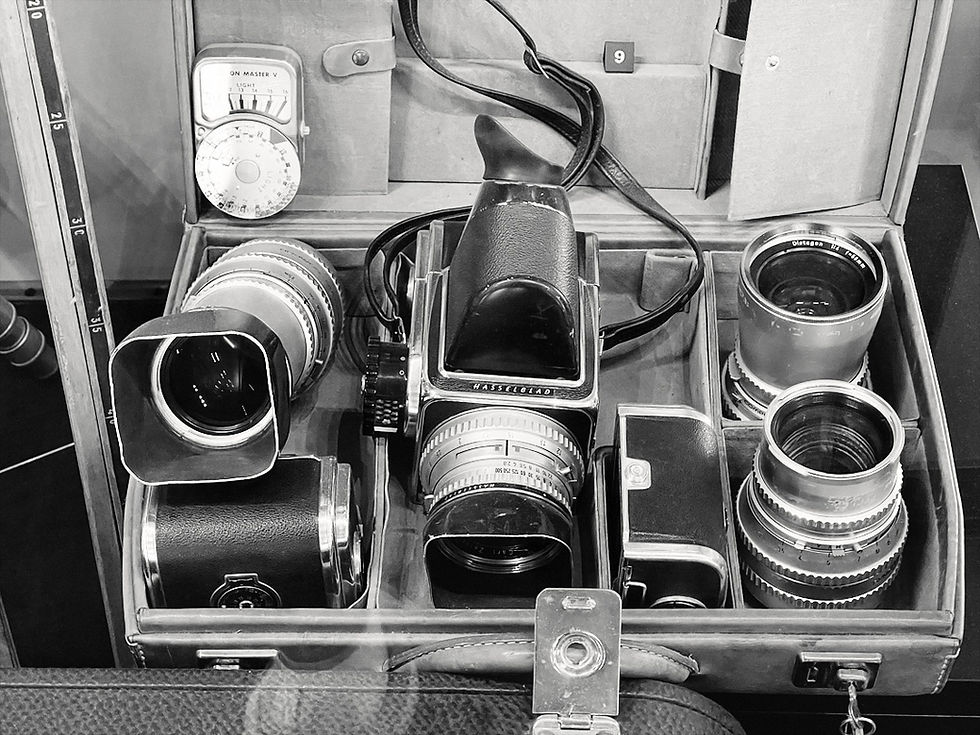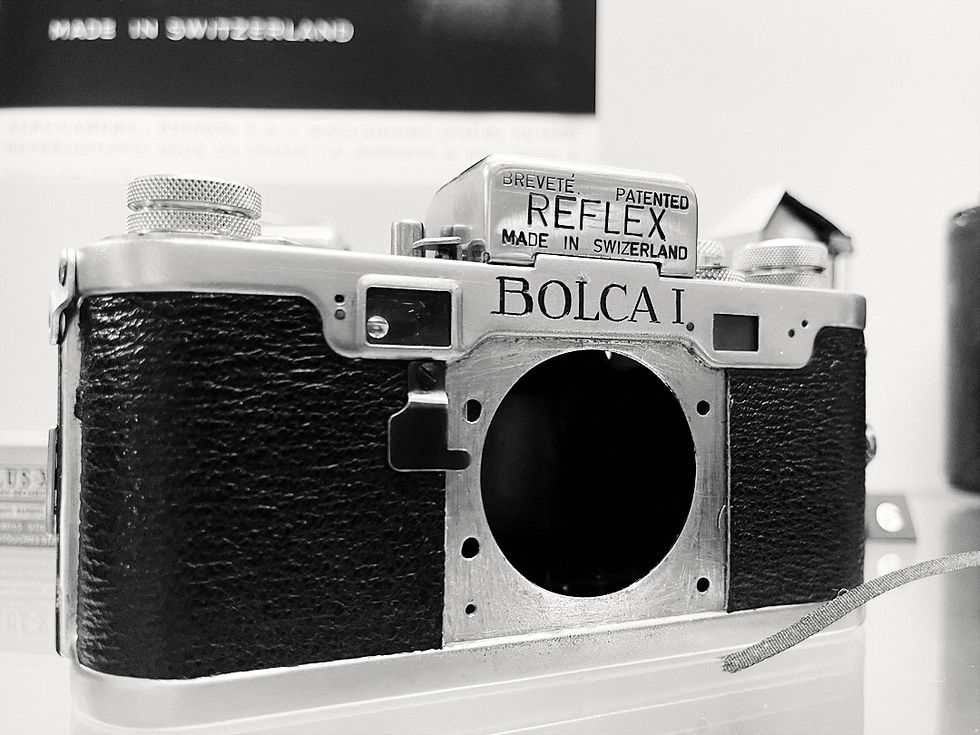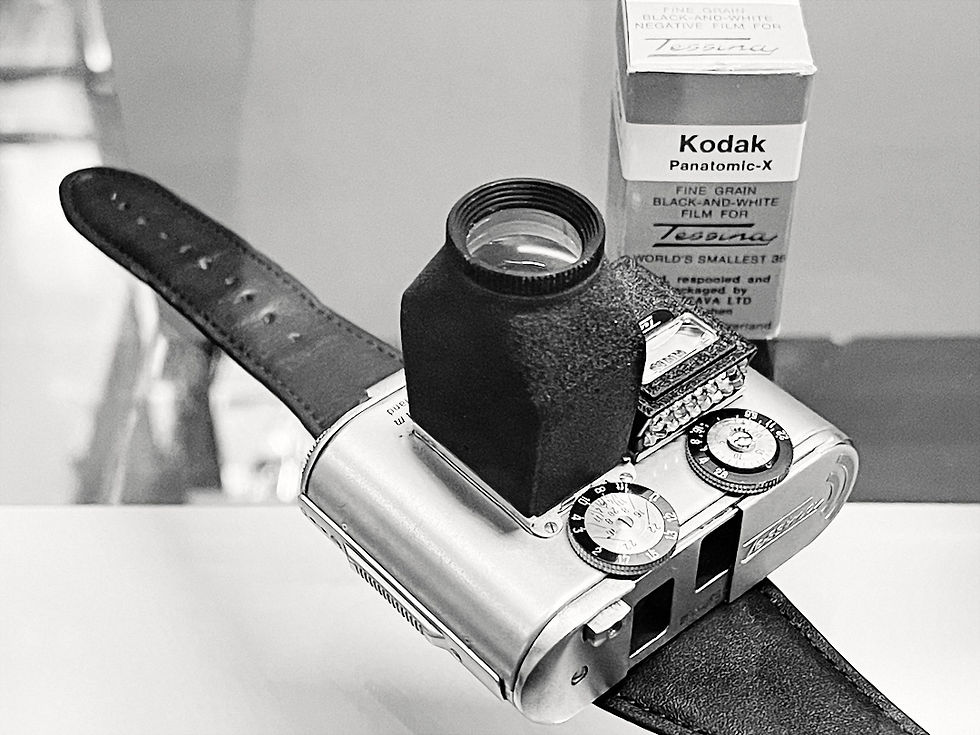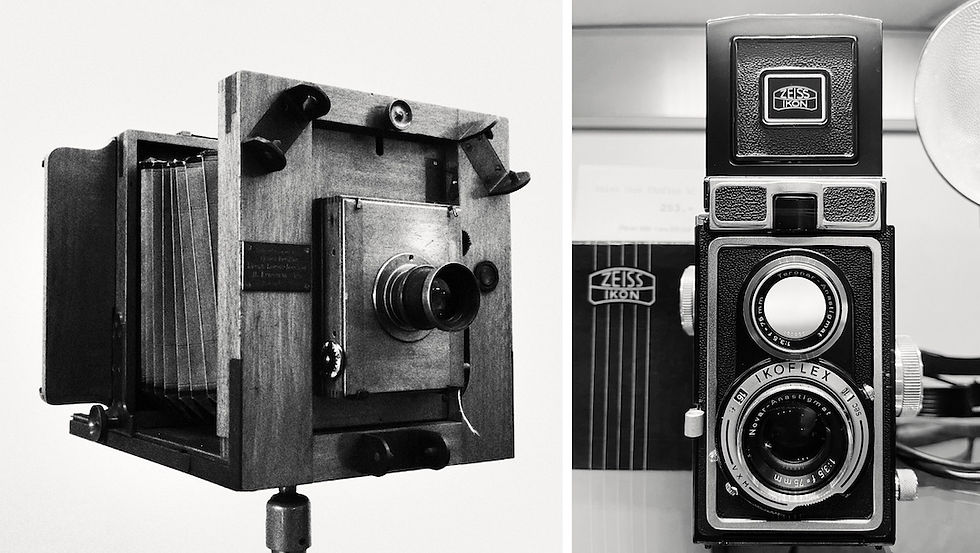Switzerland: The Camera Museum, A Journey Through the History of Photography
- Olivier

- Sep 14, 2023
- 6 min read
Updated: Mar 15, 2025
The Camera Museum in Vevey is a hidden treasure for photography enthusiasts and history buffs alike. Located in the picturesque town of Vevey, Switzerland, this museum offers a fascinating dive into the evolution of photography through the ages. Let's zoom in on what has shaped the history of this unique museum and what visitors can discover there.

© O. Robert
The Museum's history
The Vevey Camera Museum in Switzerland is a place dedicated to the history of photography and its equipment. Founded by Michel Auer and his wife Michèle, it opened its doors in 1979. Michel Auer, himself a photographer, publisher, and collector, gathered a vast collection of photographic equipment, ranging from the earliest daguerreotypes to modern digital devices.
The museum is located in a historic house in Vevey, a city known for its close ties with photography. It is also where the headquarters of Nestlé are situated. The Vevey Camera Museum has earned a reputation for highlighting the technical evolution of photography through an impressive collection of over 20 000 items, including cameras, accessories, photographs, and books.
In addition to its permanent collection, the museum regularly organizes temporary exhibitions and events that explore different aspects of photography. It also serves as an educational center, offering resources for researchers and educators, and organizes workshops and courses for the general public.
The significance of the Vevey Camera Museum lies in its ability to present the history of photography in an accessible and engaging manner, focusing on the technical and artistic evolution of this medium. For photography enthusiasts, it is an essential place to appreciate the richness and diversity of photographic technologies through the ages.

© O. Robert
The Collection
The collection of the Vevey Camera Museum is remarkably diverse and covers the entire history of photography. It includes a wide range of photographic equipment, from the earliest daguerreotypes of 1830 and plate cameras to 20th-century film cameras, up to modern digital devices. The museum's collection features rare and unique models, as well as representative examples from different eras and technologies.
The museum also has a representative range of devices from famous manufacturers like Kodak, Leica, Nikon, and Canon, showcasing the influence of these companies on the development of photography.
A variety of photography-related accessories are found in the collection, such as lenses, flashes, tripods, portable darkrooms, and other equipment used at various stages of the photographic process.
Additionally, the museum holds a collection of historical photographs, offering insights into the techniques and styles of photography over the ages. These works may include original prints from famous photographers or images illustrating the evolution of photography.
A library of books, manuals, catalogs, and periodicals related to photography is also part of the collection. These documents help contextualize the exhibited items and provide a valuable resource for researchers.
This collection, both vast and detailed, allows visitors to discover the history of photography in all its aspects, from the technical evolution of cameras to the art of photography itself. It offers a comprehensive view of how photography has evolved and influenced society.
The collection is organized across different floors corresponding to the major eras in the evolution of photography. This arrangement enables visitors to follow the progression of photographic techniques and technologies over time.

© O. Robert
Temporary exhibitions
In addition to its permanent collection, the museum hosts temporary exhibitions that showcase works by contemporary photographers, specific themes, or technological developments in the field of photography. These exhibitions ensure that each visit to the museum is a new and enriching experience.
The Vevey Camera Museum has organized and will organize several notable exhibitions, such as:
Gustave Eiffel and Photography (October 12, 2023 - April 28, 2024): This exhibition commemorates the centenary of the death of Gustave Eiffel, the engineer known for the Eiffel Tower. It features photographs taken by Gustave Eiffel in Vevey.
Escapism – Roger Eberhard in collaboration with the Festival Images Vevey (September 3, 2022 - January 8, 2023): This exhibition presented by Zurich artist Roger Eberhard focuses on the Swiss tradition of collecting lids from coffee cream pots. The images cover various photographic genres and are designed to offer an escape from daily life. The exhibition includes large-format prints and a projection titled "coffee break".
Photography and Horology (2022): This exhibition explores the connections between photography and horology, two disciplines intimately linked to the concept of time. It highlights the similarities in their components and the parallel evolution of the two technologies, especially in Switzerland, a global center of watchmaking. The exhibition features iconic photographic equipment, such as the Compass and the Alpa, which have incorporated horological techniques into their design.
These exhibitions demonstrate the museum's commitment to exploring unique and innovative aspects of photography, focusing on the intersections between photography and other fields, as well as on Swiss history and culture.

© O. Robert
Interactive technology
The Vevey Camera Museum, like many modern museums, integrates interactive technologies to enrich the visitor experience. It doesn't just display old cameras under glass. It also offers interactive installations that allow visitors to discover photography in a practical manner.
For example, visitors have the opportunity to try taking photos with historical cameras, providing a valuable perspective on the challenges faced by photographers of the past.
Workshops and lectures
The museum regularly organizes workshops and conferences for photography enthusiasts of all levels. These events offer a unique opportunity to learn from photography professionals, acquire new skills, and exchange ideas with other enthusiasts. They are also an occasion to discover the latest technological advancements in the field of photography.

© O. Robert
The museum as a source of inspiration
The Vevey Camera Museum is much more than just a museum. It is a place that inspires both amateur and professional photographers to push their creative boundaries. The diverse collection of old cameras reminds visitors that photography is an ever-evolving art form, with innovation at its core.
The museum, more than a mere sanctuary of objects, is an ode to human perseverance in the art of capturing time. For photographers, it is an inexhaustible source of inspiration, a mirror reflecting the evolution of their profession, from the magic of the first dark rooms to the feats of the digital age.
Each displayed camera tells a story, that of an era, a vision, a constant desire to freeze ephemeral moments. These silent witnesses of the past remind photographers that, despite technological advances, the essence of their art remains unchanged: the pursuit of truth, beauty, and authenticity through their lens.

© O. Robert
Conclusion
The Vevey Camera Museum not only stands as a guardian of photographic history but also as a profound source of inspiration for photographers from all walks of life.
Through its collections, exhibitions, and educational programs, it celebrates the art of photography, encouraging visitors to explore the evolution of this art form and to reflect on its cultural and historical impact. This museum serves as a bridge between generations of photographers, connecting them to their rich past while inspiring them to shape the future of their art with creativity and passion.
Thus, the museum is not merely a place of preservation. It is a continuous dialogue between the past and present, inviting photographers to honor their heritage while forging their own path in the infinite universe of photography.
Its history, impressive collection, and dynamic activities make it a must-visit place for anyone interested in the evolution of photography. Whether you are an amateur or professional photographer, a visit to this museum will leave you with a lasting impression and a renewed appreciation for this captivating art.

© O. Robert
Camera Museum
Grande Place 99 1800 Vevey Suisse
+41 21 925 34 80
For more information about the temporary exhibitions or the workshops: www.cameramuseum.ch










